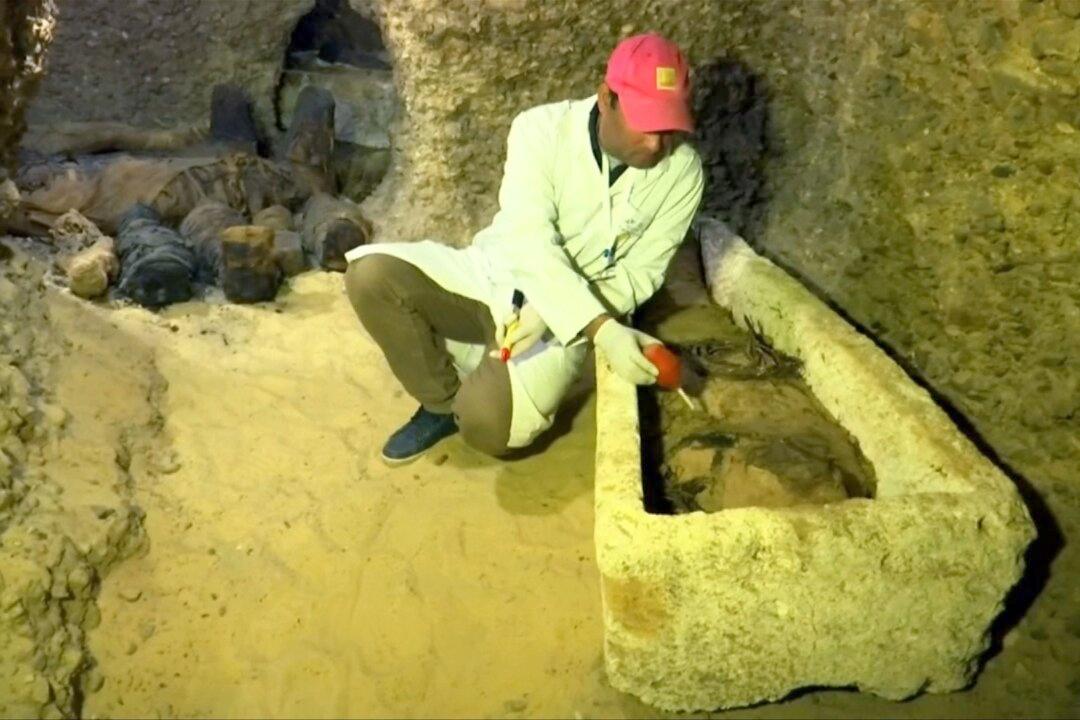Egyptian archaeologists have uncovered an ancient burial site containing 50 mummies dating back to the Ptolemaic era in Minya, south of Cairo, the Ministry of Antiquities said on Saturday, Feb. 2.

Archaeologist brushing mummy inside stone coffin in Tuna El-Gebel Region, Minya, Egypt, on Feb. 2, 2019. Screenshot/Reuters
|Updated:




